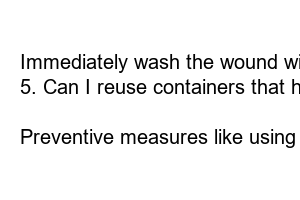깨진 유리 버리는 법
Title: How to Safely Dispose of Broken Glass without Risking Harm
Introduction:
Dealing with broken glass can be a precarious task. Accidents happen, and when shattered glass is involved, it’s essential to know the correct approach for disposal. In this blog post, we’ll guide you through the proper steps to safely dispose of broken glass and protect yourself and others from potential injuries.
1. Assess the Situation and Ensure Personal Safety:
Before you begin, take a moment to assess the situation. *Put on protective gloves and footwear* to minimize the risk of cuts or injuries. Clear the area of any obstructions and ensure that no shards remain unnoticed.
2. Gather Essential Tools:
To handle broken glass effectively, you’ll need a few tools. *A broom and dustpan* are ideal for collecting larger pieces, while *tweezers or tongs* can help you pick up smaller fragments. Place these tools nearby for easy access during the cleanup process.
3. Sweep and Collect Visible Glass:
Using the broom, *carefully sweep up the larger fragments of glass* into a dustpan. Take extra caution, ensuring the shards are securely placed inside the dustpan rather than falling back onto the floor.
4. Use Soft Materials for Delicate Surfaces:
For delicate surfaces like carpets or rugs, vacuuming might not be enough. Instead, employ a *thick slice of bread or a damp piece of cloth* to gently pat over the affected area, trapping smaller glass pieces effectively.
5. Contain and Bag Broken Glass:
To prevent injuries during transportation, it is crucial to *contain the broken glass securely*. Place all collected shards into a puncture-resistant bag. Consider layering it with an additional bag to ensure maximum safety.
6. Research Local Disposal Options:
Researching local guidelines on glass disposal is important, as laws and regulations may vary from one location to another. Check with your local authorities or waste management agency to determine the most appropriate method for disposing of broken glass in your area.
7. Arrange for Proper Disposal:
In some cases, curbside pickup may be available for glass disposal. Alternatively, you may need to transport the bagged glass to a designated recycling center or hazardous waste collection facility. Ensure you follow the recommended procedure to dispose of the broken glass properly.
Summary:
Following a proactive approach when dealing with broken glass is crucial to avoid injuries and potential harm. Remember to prioritize your safety by wearing protective gear, gathering essential tools, and carefully collecting and bagging the broken glass. Research the specific disposal guidelines applicable in your area and arrange for proper disposal at a designated facility. By handling broken glass responsibly, you contribute to a safer environment for everyone.
FAQs:
1. Can I throw broken glass in the regular trash?
No, broken glass should not be thrown in regular trash. It must be handled separately due to the safety risks involved.
2. Can I recycle broken glass?
It depends on the recycling facilities in your area. Check their guidelines to determine if broken glass can be recycled.
3. How can I safely dispose of shattered window glass?
Follow the steps mentioned in this article. Prioritize safety, secure the glass, and research the appropriate disposal methods specific to your location.
4. What if I accidentally cut myself while cleaning up broken glass?
Immediately wash the wound with soap and water. If the cut is deep or shows signs of infection, seek medical attention promptly.
5. Can I reuse containers that have been shattered but are still intact?
It is advisable not to use containers that have been broken, as they may still have sharp edges and could cause injury down the line.
6. How can I minimize the risk of broken glass accidents?
Preventive measures like using shatter-proof glass, storing glass items out of reach, and being cautious when handling glass can help minimize the risk of accidents.

